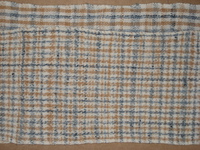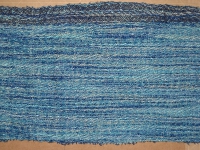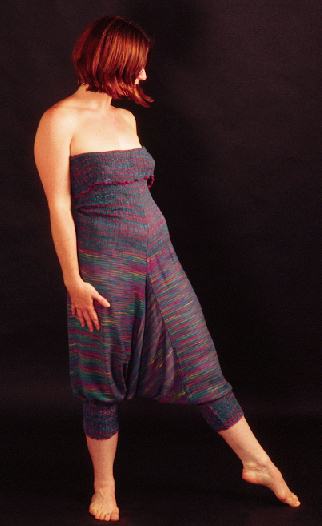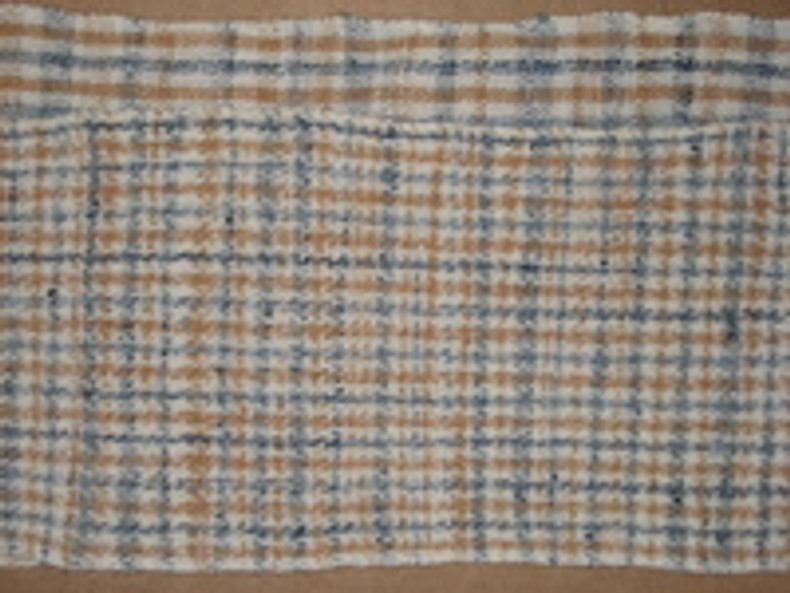I was weaving plain weave. At the time I was not really clued in to the amount of twist, other than to put enough in so it wouldn’t fall apart during weaving. So I put another warp on, and wove a small piece in plain weave, and on a whim, having nothing to do with a real experiment, I wove another in 2/2 twill. Much to my surprise, the twill piece contracted a great deal.

Well, that set me on another path to learn about twist and energy.
So I quizzed my friends in the industry and they taught me about
knitting twist, filling twist, warp twist, crepe twist and I was off
& running.
Now, what if I combined the amount of twist with
weave structure? I have a friend who is playing around with “structural
pleats “. I can tell you from experience that the easiest way to make
self-pleating cloth is to use singles with at least a filling twist, and
warp twist is better. Crepe twist certainly works too, but it is more problematic to work with.
Next I made two pieces on the same warp: both a 3/1 vs. 1/3 twill, but
with different amount of twist in the weft yarns. The earlier piece was
the same amount of twist on different weave structures. The dark blue
piece with knitting twist is a pretty flat fabric, while the turquoise
with warp twist has ridges. Well, now that I know I can get some
contraction using a combination of weave structure and amount of twist
in the yarn, how much contraction is possible in a cloth? Can I use it
for shaping parts of a garment?

Ans: 60%, and YES!
Thus came the “Crepe & Shape“ concept, using
a twill sett for two-block twill. I wove part of it in filling twist
with 2/2 twill in one block and canvas in the other. Then I switched to
using crepe twist yarn in the same weave structures as a transition,
then switched to double weave. The sett is very open for double weave,
so the crepe twist yarns had a lot of room for movement in the
finishing. Of course the movement was in trying to fold back on itself,
contracting that section 60%. OK. so that was all completed by 1998,
when I had an ensemble in the fashion show at Convergence. Then I did
this jumpsuit:


